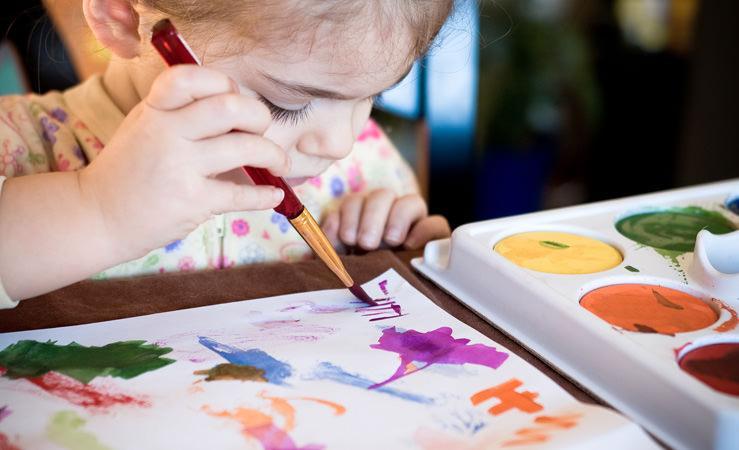The first day of school is always emotional and together with our children, we prepare backpacks, notebooks and make sure everything is ready in the pencil case.
We should use the same care in preparing our anti-stain kit during the school year (and the rest of the year)! pen marks, markers, crayons from art lessons and stains from snacks - let's get ready to make them disappear! Here's how to proceed to eliminate every stain from school aprons and clothes.
PLAN OF ATTACK
- speed: a stain that was just made can be eliminated more easily because it has not had time to irreversibly damage the fibres.
- basic rules: if you're not sure what to do, wet it with cold water (heat can set the stain permanently), rub it with Castile or vegeable oil soap, rinse with cold salt water and hang it up to dry in the shade.
- test fabrics: every fabric reacts differently to solvents. Put just a drop on a hidden part of the item to test the reaction.
- delicate and coloured fabrics: use a clean cloth that has been dipped in the appropriate stain remover and pat without rubbing.
- resistant fabrics: use a clean cloth that has been dipped in an appropriate stain remover, fold the cloth and rub it between your hands.
- use the same fabric: avoiding pilling by using the same type of fabric as that of the item (e.g. wool with wool, silk with silk, etc.).
- move the stain: when removing stains, place an absorbent material like cotton wool or a paper towel under the stain, so that once diluted it transfers from the fabric to the material underneath.
- avoid streaks: use minimal solvent and rub gently to avoid streaks.
- stubborn stains: before washing, wet the item with cold milk and soak it in salt water for the night.
- wash and hang to dry: for every solvent, use as little as possible, wash in cold water, and hang to dry in the shade.
STAINS
MARKERS AND PAINT
blot with hot water and ammonia. For wool and silk, use Castile or vegeable oil soap dissolved in lukewarm water.
PEN INK
blot with equal parts milk and vinegar or both, on the underside, with rubbing alcohol.
WAX
scrape it off the item, then place the fabric between two paper towels and iron it.
CHOCOLATE
rinse with cold water and a few drops of ammoniac or wet the stain with a mixture of glycerine and egg yolk, let sit and then rinse with lukewarm salt water.
CHERRIES
wash and with soap and water and let sit for a few hours with a few drops of milk, before rinsing.
GLUE
apply castile soap and warm white vinegar.
OIL PAINT
place a cloth under the stain and blot on the other side and then the side with the stain using turpentine.
GRASS
after dabbing the stain with lemon juice, treat it with water and vinegar. For cotton we can blot with castile soap and baking soda dissolved in a small amount of water and then leave the item to dry before washing it in the washing machine.
MUD
let dry and brush away, blotting any streaks with water and vinegar.
FRUIT (fresh fruit, fruit juice, jams)
soften the cloth with a bit of cold milk, then rinse with water or vinegar and lemon juice.
ICE CREAM
fresh stains can be removed easily with cold water and castile soap. Soften older stains with very salty water and a few drops of alcohol and ammoniac.
CHEWING GUM
put the item in the freezer for an hour, then blot with water and hydrogen peroxide.
INK
blot on the underside with alcohol, then soak the affected area in salt water and white vinegar.
MARKER
blot with alcohol then wash with soap and water.
WHITE-OUT
let dry and then scratch off with an old toothbrush.
TOMATO
clean with hot soapy water and if the stains are dry, add hydrogen peroxide.


